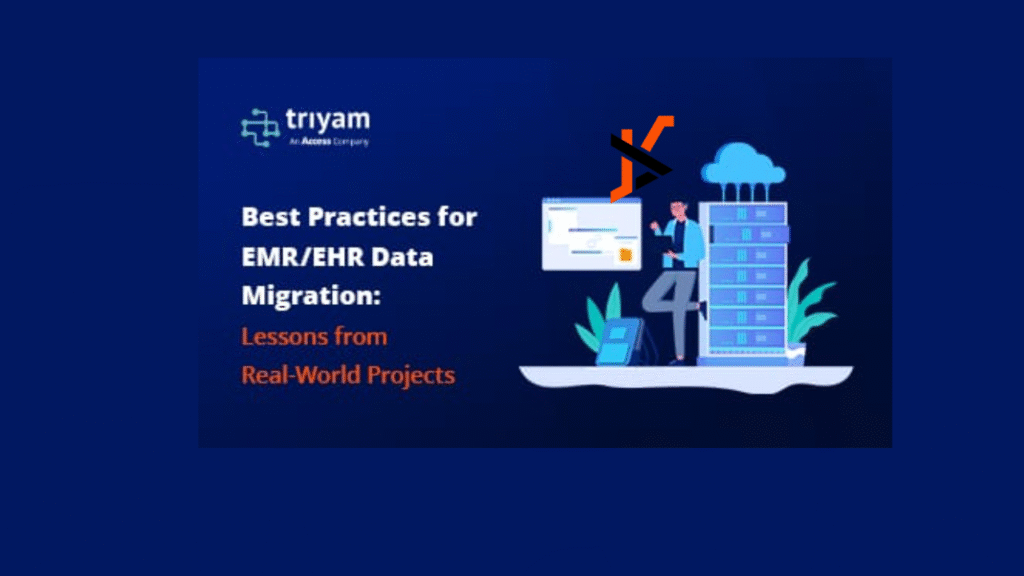Electronic Health Record (EHR) data migration is a critical process for healthcare organizations transitioning to new systems to improve efficiency, interoperability, and patient care. However, migrating sensitive patient data is complex, with challenges like data integrity, security, and workflow disruptions. Drawing from real-world projects and industry insights, this article outlines best practices to ensure successful EHR/EMR data migration while minimizing risks and maintaining continuity of care.
Why EHR Data Migration Matters?
EHR systems store vital patient information, including medical histories, medications, and test results, which are essential for delivering quality care. Migrating this data to a new system, whether due to outdated software, mergers or the need for advanced features, ensures continuity, compliance with regulations like HIPAA, and enhanced operational efficiency. A poorly executed migration can lead to data loss, errors, or downtime, compromising patient safety and organizational reputation.
Key Challenges in EHR Data Migration
- Data Compatibility: Differences in data formats or database structures between old and new systems can cause inconsistencies.
- Data Integrity: Risks of data loss, corruption, or duplication, with studies noting typical patients record duplication rates of 8–12%.
- Security and Compliance: Ensuring data remains secure and compliant during transfer is critical to avoid breaches.
- Downtime and Workflow Disruption: Migrations can interrupt clinical operations, impacting patient care.
- Resource Constraints: High costs and the need for skilled IT and clinical staff can strain budgets and timelines.
Best Practices for Successful EHR Data Migration
- Plan Strategically: Create a robust migration plan by assessing data quality, setting phased timelines, mitigating risks, and involving stakeholders like clinicians and IT staff to align with organizational goals.
- Map and Clean Data: Ensure accurate data mapping using standardized formats like CCDs, cleanse duplicates and errors, and test mappings in a sandbox to maintain data integrity.
- Secure and Comply: Protect data with encryption, secure transfer protocols, and HIPAA-compliant practices, using auditing tools to monitor integrity throughout the migration.
- Phase the Migration: Minimize disruptions by prioritizing critical data (e.g., patient demographics), piloting with a single department, and refining processes based on feedback.
- Train and Engage Staff: Boost adoption with role-specific training, early user involvement, and post-migration IT support to address concerns and ensure proficiency.
- Collaborate with Experts: Partner with EHR vendors and consultants for compatibility and scalability, leveraging cloud-based solutions for efficient data transfers.
- Test Thoroughly: Validate data transfers in a test environment for pre-migration, spot-check records for post-migration, and conduct a final vendor review to ensure accuracy.
- Optimize Post-Migration: Collect user feedback, track KPIs (e.g., error rates, uptime), and refine workflows to enhance long-term system efficiency.
Benefits of Effective EHR Data Migration
When executed well, EHR data migration delivers significant benefits:
- Improved Patient Care: Accurate, accessible data supports better clinical decisions and continuity of care.
- Operational Efficiency: Streamlined workflows reduce administrative burdens, freeing time for patient care.
- Regulatory Compliance: Proper migration ensures adherence to HIPAA and other standards.
- Cost Savings: Cloud-based systems and optimized processes can reduce long-term costs.
Conclusion
At Triyam, we recognize that EHR data migration is a critical yet complex process for healthcare organizations, and we streamline it with our tailored solutions like Fovea EHR Archive ensuring a secure, efficient transition that enhances patient care and operational efficiency. By crafting customized migration plans, prioritizing precise data mapping and HIPAA-compliant security, implementing a phased approach to minimize disruptions, providing comprehensive staff training, leveraging our proven expertise, and conducting rigorous testing with advanced validation tools, we ensure data integrity and system reliability. Our real-world successes demonstrate how Triyam’s methodologies and solutions enable healthcare providers to archive legacy data cost-effectively while maintaining accessibility, making us the trusted partner for a seamless transition to a robust EHR system

